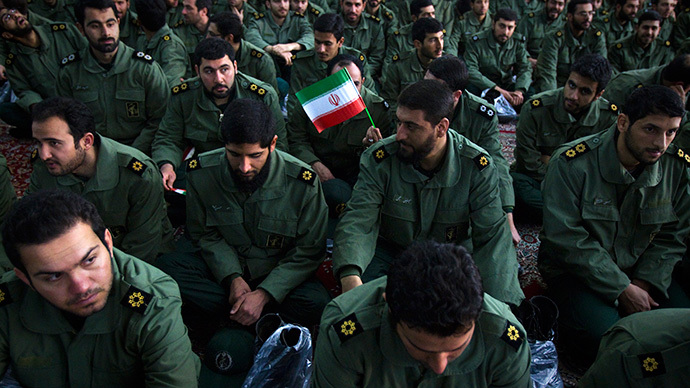US airstrikes to support Iranian Revolutionary Guard's offensive in Iraq?
RΤ June 12, 2014 21:16
Published time: 17/6/14
 |
| F-16 Fighting Falcon aircraft (AFP Photo / DOD / US Air Force / JonathanSynder) |
On Wednesday, Al-Qaeda affiliate insurgents from the armed group Islamic State in Iraq and the Levant (ISIL or ISIS) conquered former dictator Saddam Hussein's hometown of Tikrit, marking the second major loss for the Iraqi government of Prime Minister Nouri al-Maliki. Earlier this week, insurgents captured Mosul, the second-largest city in the country. With jihadists threatening Baghdad and security forces unable resist the Sunni Islamists' assault, Maliki turned to foreign powers for help, getting responses from two unlikely allies, Iran and the US.
Two battalions of the Quds Forces, which is the overseas branch of the Iranian Revolutionary Guard, moved to Iraq on Wednesday, the Wall Street Journal reported. There they worked jointly with Iraqi troops to retake control of 85 percent of Tikrit, security forces from both countries told the Journal. Iranian forces are also helping guard the Iraqi capital of Bagdhad, as well as two Shiite holy cities that the Sunni jihadists are threatening.
 |
| Iranian Revolutionary Guard (Reuters / Raheb Homavandi) |
.
“We do have a stake in ensuring these jihadists don't get foothold in either Iraq or Syria,” Obama said.
.
Later in the day, White House Press Secretary Jay Carney clarified that US will not send ground troops to Iraq, but is seriously considering airstrikes that would help to drive jihadist militants out of their strongholds.
Iraq has privately indicated to the Obama administration that it would welcome airstrikes with either drones or manned aircraft that target ISIS militants in Iraqi territory, US officials said Wednesday.
.
If so, US may find itself assisting its archnemesis in the Middle East to fight against Sunni militias that enjoy support from one of America's closest allies in the region, Saudi Arabia. The ruling family of the kingdom has long been accused of supplying jihadists all over the region with arms and financial support, the New York Times reported.

.
Under Hussein’s dictarorship, Sunnis dominated the Iraqi political landscape, even though over 60 percent of Iraqis are Shia. In Iran, over 95 percent of the population is Shia. The two countries are the only majority-Shiite nations in the Middle East. (Over 1.1 billion Muslims around the world are Sunni, while less than 200 million Muslims are Shia.)
.
From 1980 to 1988, the two nations battled in a deadly war in which both sides deployed chemical weapons. The US sided with Hussein during that war, but turned against the dictator when he invaded American ally Kuwait in 1990, leading to the first Gulf War. Hussein stayed in power until the second Gulf War began in March 2003.
.
Once Hussein was captured by American forces in December 2003, the Shia majority regained political power. Al-Maliki is a Shiite Muslim and has become unpopular with Iraq Sunni minority, which has accused the government of discrimination. Since 2005, Iran and Iraq have had a flourishing relationship, and are now considered to be each other’s strongest allies.
 |
| Militants of the Islamic State of Iraq and the Levant (ISIL) waving the trademark Islamists flag after they allegedly seized an Iraqi army checkpoint in the northern Iraqi province of Salahuddin on June 11, 2014. (AFP Photo / HO / Welyat Salahuddin) |
.
The US still sees Iraq as vital to its national interests, despite having pulled its troops out of the country at the end of 2011.
“What we've seen over last couple of days indicates degree to which Iraq is going to need more help,” Obama said, calling recent events a “wake-up call for the Iraqi government.”
.
"The next 9/11 is in the making," Sen. Lindsey Graham (R-South Carolina) said of the danger of the Iraqi insurgency

No comments:
Post a Comment